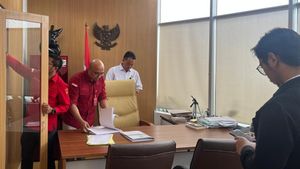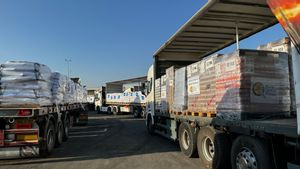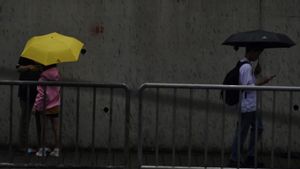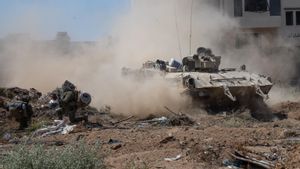JAKARTA - The Meteorology, Climatology and Geophysics Agency (BMKG) said that Bali could experience similar earthquake hazards repeatedly because it has a record of similar earthquakes in the same place.
"Bali faces similar and repeated dangers, because if we look at the historical record of the devastating earthquake in Bali on November 22, 1815, the slopes of the hills in Bali have experienced landslides and claimed lives," said the Coordinator for Earthquake Mitigation and BMKG Daryono's tsunami quoted by Antara, Friday, October 22.
Daryono explained that the devastating earthquake that occurred in 1815 also caused soil fractures in Bali to have spread in many places. Some even cut Tamblingan Lake and caused a big flood.
Then Daryono mentioned the earthquake in Bali that occurred on January 21, 1917, about 80 percent of the earthquake victims were caused by landslides. With the death toll of more than 1,500 people.
Furthermore, in addition to liquefaction (soil melting), the Seririt Earthquake that occurred on July 14, 1976, also caused many soil fractures and cliff landslides to appear in Pupuan, Tabanan, Bukit Geger and Buleleng.
"If yesterday's earthquake was in the west, this is in the east and 559 people died. This is evidence that this collateral hazard will continue to occur if no mitigation efforts are made related to this impact," he said.
Seeing strong earthquakes and their after effects occur repeatedly near Mount Agung and Mount Batur, he advised the government to anticipate and mitigate the people living in these areas in the future.
“This must be anticipated in the future as an effort to mitigate the people living in the central mountains of Bali. Not only building earthquake-resistant buildings, but also paying attention to the biology of the earthquake risk-based environmental system in building," he said.
Meanwhile, the Coordinator of Land Movement Mitigation of the Center for Volcanology and Geological Hazard Mitigation, Agus Budianto, suggested that affected areas that were open and located in valley grooves should be moved away from valley grooves and cliffs.
“Because of this landslide, he has already opened a path on it and it will keep repeating, over and over again. So, avoid the combination of water flow and the impact of the earthquake in the area," said Agus.
In addition, he advised the government to help the community maintain slope stability while preserving the forest and building high vigilance when evacuating and doing activities around the main affected locations when it rains.
"We maintain the stability of the slopes while preserving the existing forest, so the forest is still guarded. Never disturb either on the cliff side or on the Caldera Cliff," he said.
To build vigilance, he said, the government needs to get used to installing landslide signs, evacuation routes and independent monitoring of rainfall from now on, considering that Indonesia is a country prone to natural disasters.
To the community, he advised not to develop settlements near the Caldera Cliff and at the mouth of the valley channel and to increase vigilance when it rains, to stay away from the valley and cliff paths.
In addition, the local community is advised to always follow the directions of the local government and local BPBD.
"Don't forget, BPBD is the center for community communication. If there is an incident, report it immediately or such an effort will be made," said Agus.
The English, Chinese, Japanese, Arabic, and French versions are automatically generated by the AI. So there may still be inaccuracies in translating, please always see Indonesian as our main language. (system supported by DigitalSiber.id)













